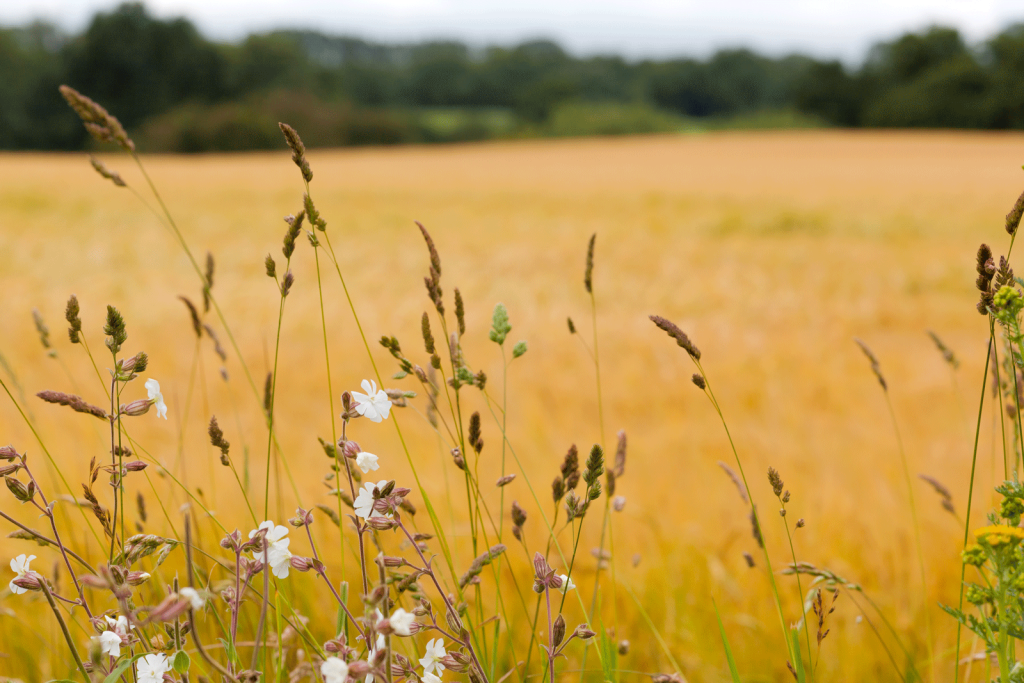Restoring wildlife habitat is a crucial component of conservation efforts, ensuring that native species have the food, shelter, and resources they need to thrive. Habitat loss due to agricultural expansion, urban development, and environmental degradation has put pressure on many wildlife populations. Through the Conservation Reserve Program (CRP) and other conservation initiatives, FDCE Conservation & Bioenergy is dedicated to reversing this trend by restoring native landscapes and creating sustainable habitats for wildlife.
With over 400,000 acres of experience in habitat restoration, FDCE plays a vital role in helping landowners establish and maintain high-quality wildlife habitats. Here’s how we support wildlife restoration through CRP and beyond.
Establishing Native Grasslands and Pollinator Habitats
Native grasslands provide essential habitat for a variety of wildlife, including birds, mammals, and pollinators. These grasslands offer nesting sites, food sources, and protective cover, making them an ideal solution for wildlife restoration.
FDCE’s Approach to Grassland Restoration:
Custom-Selected Native Seeds: We provide a diverse mix of native grasses and forbs that align with CRP requirements and local ecosystems.
Precision Seeding Techniques: Our advanced planting equipment ensures even seed distribution and optimal growth conditions.
BOOST Micronutrient Enhancement: Our proprietary seed treatment enhances seedling vigor and survival, helping plants establish quickly and provide habitat faster.
By restoring native grasslands, FDCE helps create biodiverse ecosystems that support both wildlife and sustainable land use.
Protecting and Expanding Pollinator-Friendly Landscapes
Pollinators like bees, butterflies, and birds play a critical role in sustaining plant populations and agricultural systems. However, habitat loss has led to declining pollinator numbers, threatening biodiversity and food production.
How FDCE Supports Pollinators:
Pollinator-Specific Seed Mixes: We incorporate wildflowers and nectar-producing plants into CRP projects to attract and support pollinators.
Pollinator-Friendly Solar Arrays: FDCE works with renewable energy companies to plant pollinator-friendly vegetation around utility scale solar projects, creating dual-use land for conservation and energy production.
Minimal Chemical Use: Our site-specific herbicide programs target invasive species while protecting beneficial plants that pollinators rely on.
By integrating pollinator-friendly practices into our restoration projects, FDCE enhances ecosystem resilience and biodiversity.
Enhancing Wetlands and Riparian Buffers for Waterfowl and Aquatic Life
Wetlands and riparian areas (the land along rivers and streams) are critical habitats for waterfowl, amphibians, and fish. However, these habitats are often degraded due to pollution, erosion, and land conversion.
FDCE’s Water Habitat Restoration Solutions:
Buffer Strips Along Waterways: We establish native vegetation buffers that reduce runoff, filter pollutants, and provide nesting areas for birds.
Erosion Control Measures: By planting deep-rooted native species, we help stabilize soil and prevent sedimentation in rivers and wetlands.
Water Quality Improvement: Our restoration projects support cleaner water by reducing agricultural runoff and increasing natural filtration.
Through wetland and riparian restoration, FDCE improves water quality, supports aquatic ecosystems, and enhances habitat connectivity for wildlife.
Supporting Game and Non-Game Species Conservation
Many wildlife species, including deer, quail, turkey, and pheasants, depend on healthy grasslands, woodlands, and wetlands for survival. CRP and other conservation programs play an essential role in providing these species with shelter, breeding grounds, and food sources.
FDCE’s Approach to Game and Non-Game Habitat Management:
Strategic Vegetation Planning: We design habitat corridors that connect fragmented landscapes, ensuring wildlife can migrate and thrive.
Diverse Habitat Structures: Our plantings include tall grasses for cover, mixed cool season warm season grasses for nesting, and pollinator habitats for brood rearing and nectar for a variety of wildlife.
Sustainable Land Management: Through controlled burns, selective mowing, and invasive species management, we maintain healthy, diverse habitats over time.
These practices not only benefit game species but also support songbirds, small mammals, and other native wildlife.
Utilizing Technology for Habitat Monitoring and Success Tracking
Restoring wildlife habitats isn’t just about planting the right species—it also requires long-term monitoring and adaptive management. FDCE incorporates advanced technology to track habitat restoration progress and make data-driven improvements.
Technology-Driven Habitat Monitoring:
GIS Mapping & GPS Tracking: We use geospatial tools to analyze site conditions and optimize habitat placement.
Data Analytics: We collect field data to track species diversity, vegetation success rates, and soil improvements over time.
By leveraging technology, FDCE ensures habitat restoration projects are effective, sustainable, and continuously improving.
Partnering with Conservation Programs and Landowners
Wildlife habitat restoration requires collaboration between conservation organizations, government programs, and private landowners. FDCE works closely with a variety of partners to ensure that conservation goals align with landowner needs and environmental benefits.
How We Work with Landowners:
Navigating CRP and USDA Programs: We guide landowners through the application process, compliance requirements, and best management practices.
Custom Conservation Plans: Each habitat restoration project is tailored to the specific land, wildlife goals, and USDA regulations.
Long-Term Support and Maintenance: We provide ongoing guidance to ensure CRP lands continue to thrive and benefit wildlife.
By building strong partnerships, FDCE helps ensure restoration efforts have lasting impacts on the environment and rural communities.
Promoting Sustainable Agriculture and Wildlife Coexistence
Sustainable agriculture and wildlife conservation don’t have to be at odds. Through CRP and conservation programs, FDCE helps landowners balance productive land use with habitat preservation.
Key Benefits of Sustainable Agriculture and Habitat Coexistence:
Healthier Soil & Reduced Erosion: Native grasses improve soil structure, benefiting both crops and wildlife.
Biodiversity Increase: A diverse ecosystem attracts beneficial insects and wildlife, creating a balanced natural environment.
Water Quality Improvement: Conservation buffers filter agricultural runoff, benefiting both farm productivity and local waterways.
By integrating habitat restoration into sustainable land management, FDCE ensures that agriculture and conservation can work hand in hand.
Partner with FDCE for Wildlife Habitat Restoration
Restoring wildlife habitat is a long-term investment in biodiversity, environmental health, and sustainable land use. FDCE Conservation & Bioenergy is committed to helping landowners, farmers, and conservation partners create thriving ecosystems that support wildlife while benefiting agricultural landscapes.
Whether you’re interested in CRP enrollment, native grassland restoration, wetland enhancement, or pollinator conservation, FDCE provides the expertise, technology, and resources needed for success.
Contact FDCE today to learn how we can help you restore wildlife habitats and create a sustainable future for generations to come.

